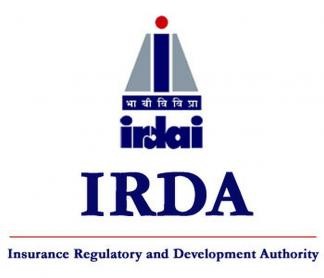The country’s insurance penetration has fallen as the insurance penetration of domestic life insurance sector is reduced from 3.2 per cent in 2021-22 to 3 per cent in 2022-23 and the same for non-life Insurance sector remained at 1 per cent in both these years, said Irdai citing Swiss Re Sigma Report, in its annual report for 2022-23 released on Wednesday
Hyderabad/Mumbai:
Despite all round efforts by the government and insurance regulator Irdai, India’s overall insurance penetration, one of the key parameters in assessing the spread of insurance in the country by calculating the contributions of premium to the GDP, fell marginally to 4 per cent in 2022-23 from the level of 4.2 per cent in 2021-22, primarily due to lesser contribution from the life insurance sector.
The country’s insurance penetration has shrunk as the insurance penetration of domestic life insurance sector was reduced from 3.2 per cent in 2021-22 to 3 per cent in 2022-23 and the same for non-life Insurance sector remained at 1 per cent in both these years, said Irdai citing Swiss Re Sigma Report, in its annual report for 2022-23 released on Wednesday.
India’s penetration was at 4.2 per cent for fy 2020-21and FY 2021-22.
After hovering between 3 per cent and 4 per cent for almost a decade, it had inched up to 4.2 per cent in Fy2020-21 when Covid 19 pandemic outbreak had happened.
India’s highest ever penetration was 5.20 per cent in FY2009-10.
Analysts point out that the penetration has slightly dipped in FY2022-23 as the country’s GDP has grown at a faster clip during the post pandemic period and insurance industry has not been able to match that.
However, in 2022-23, the country’s life insurance density increased to $ 70 from $ 69 in 2021-22,whereas, non-life insurance density remained stable at $22.
In 2022-23, the insurance density in India increased from $ 91 in 2021-22 to $ 92 in 2022-23.
Insurance penetration and density are two metrics, among others, often used to assess the level of development of the insurance sector in a country. While insurance penetration is measured as the percentage of insurance premiums to country’s GDP, insurance density is calculated GDP as the ratio of premium to population (per capita premium).
Insurance density in India increased from $ 78 in 2020-21 to $ 91 in 2021-22. The level of insurance density had reported consistent increase from $ 11.5 in 2001-02 to $ 64.4 in the year 2010-11.
After some ups and downs, insurance density recorded steady increase from the year 2016-17. While life insurance density has gone up from $ 9.1 in 2001-02 to $ 69 in 2021-22, non-life insurance density has gone up from $ 2.4 to $ 22 during the same period.
As per Swiss Re Sigma World Insurance Report, globally insurance penetration and density were 2.8 per cent and $ 354 for the life segment and 4 per cent and $ 499 for the non- life segment. Overall, insurance penetration and density globally were 6.8 per cent and $ 853 respectively in 2022.
In 2022, India was ranked as the 10 largest insurance market in the world with a premium volume of $ 131 billion (with 1.9 per cent share in global insurance premium) and it is projected to become the sixth largest by the year 2032 as India’s insurance market is one of the fastest growing insurance markets in the world, said the Irdai.
The growth outlook for India is based on strong economic growth, rising disposable incomes, a young population, increased risk awareness, digital penetration, and regulatory developments, explained the regulator.

